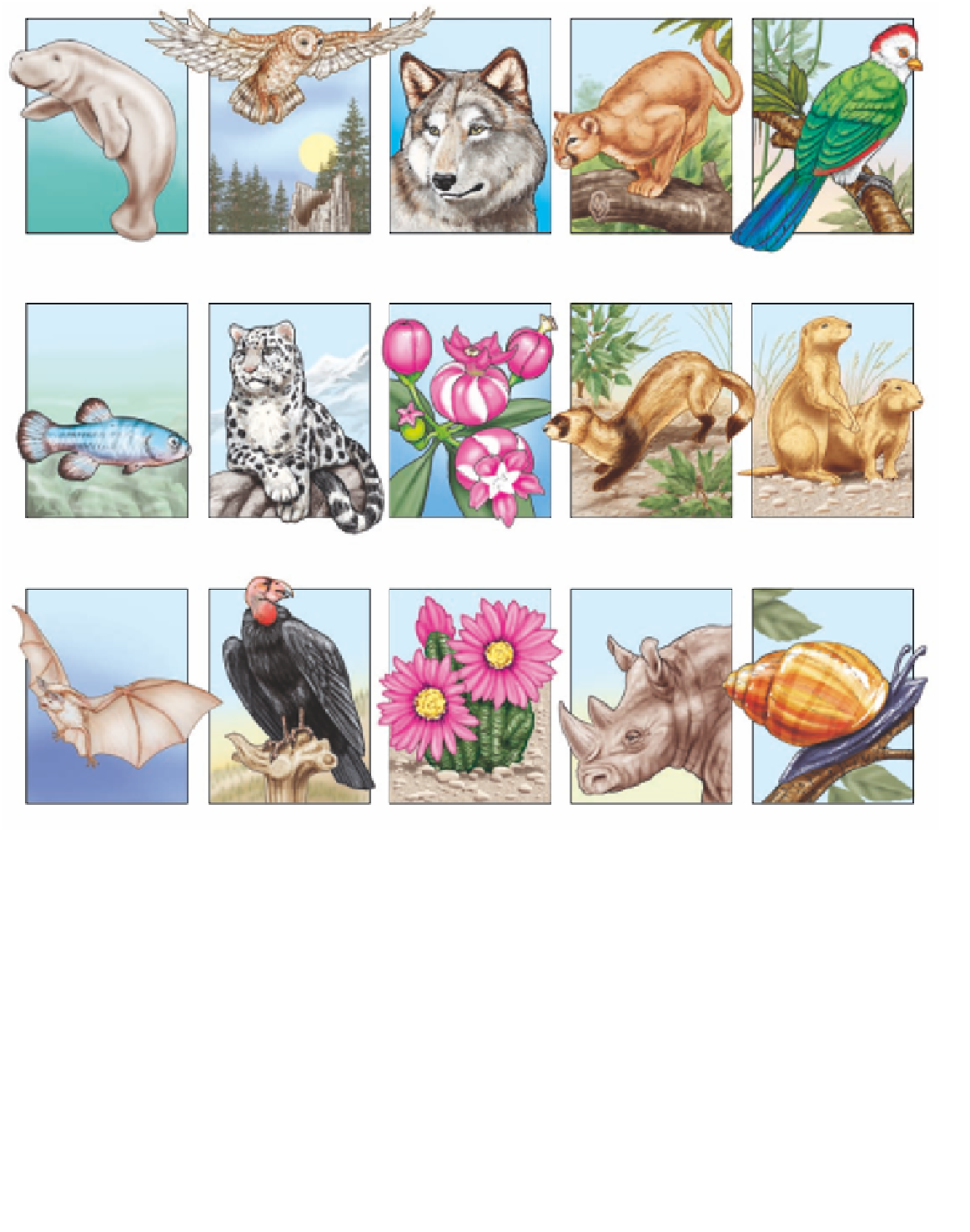Environmental Engineering Reference
In-Depth Information
Florida manatee
Northern spotted owl
Gray wolf
Florida panther
Bannerman's turaco
Devil's hole pupfish
Snow leopard
Symphonia
Black-footed ferret
Utah prairie dog
Ghost bat
California condor
Black lace cactus
Black rhinoceros
Oahu tree snail
Science Supplement 2 at the end of this topic) is likely
to increase.
Second,
current and projected extinction rates are
much higher than the global average in parts of the
world that are endangered centers of the world's bio-
diversity. Conservation biologists urge us to focus our
efforts on slowing the much higher rates of extinction
in such
hot spots
(Figure 8-26, p. 176) as the best and
quickest way to protect much of the earth's biodiver-
sity from being lost prematurely.
Third,
we are eliminating, degrading, and simpli-
fying many biologically diverse environments—such
as tropical forests, tropical coral reefs, wetlands, and
estuaries—that serve as potential colonization sites for
the emergence of new species. Thus, in addition to in-
creasing the rate of extinction, we may be limiting the
long-term recovery of biodiversity by reducing the
rate of speciation for some types of species. In other
words, we are creating a
speciation crisis.
See the Guest
Essay by Normal Myers on this topic on the website
for this chapter.
Some people—but few biologists—say the current
estimated extinction rates are too high and are based on
inadequate data and models. Researchers agree that
their estimates of extinction rates are based on inade-
quate data and sampling. They are continually striving
to get better data and improve the models they use to
estimate extinction rates.


